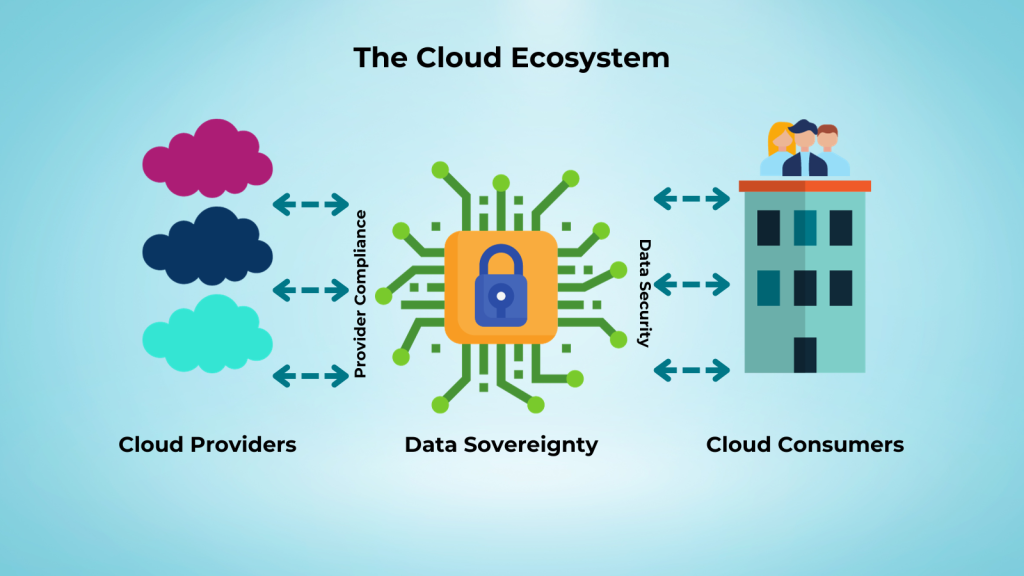Imagine a bustling corporate office where collaboration flows seamlessly. Colleagues from around the world connect effortlessly, sharing ideas, documents, and strategies. It’s a vision of modern work culture, made possible by the magic of cloud computing.
But beneath this digital utopia lies a pivotal secret, an enigma that organizations worldwide are racing to solve – data sovereignty.
In the world of cloud computing, data sovereignty is more than just a buzzword; it’s the gatekeeper to secure collaboration. It ensures that your sensitive data is protected no matter where it flows.
In this article, we’ll delve deep into this crucial concept, and we’ll explore how cloud data sovereignty and collaboration is only possible through sharing data securely.
The Challenges of Data Sovereignty in Cloud Computing
Cloud data sovereignty, in essence, means having control over where your data resides. It also means ensuring that it adheres to specific legal jurisdictions. As organizations increasingly turn to the cloud for storage and collaboration, the concept has gained prominence.
One of the challenges organizations face is navigating the complex web of international and domestic laws and regulations governing data. Laws can vary significantly from one jurisdiction to another, and these variations can impact how data is stored, accessed, and shared.
The Importance of Data Sovereignty in Cloud Collaboration
When it comes to cloud collaboration, the significance of data sovereignty cannot be overstated. It forms the bedrock upon which secure collaboration is built.
Consider this: organizations often need to collaborate across borders, sharing sensitive information and critical documents. Without data sovereignty, they risk exposing their data to legal complexities and potential breaches.
Jurisdiction, Cloud Providers, and Cloud Consumers
Data sovereignty concerns affect both cloud providers and consumers. Cloud providers must navigate these concerns to offer secure and compliant services. Consumers must ensure their data remains within their desired jurisdiction.

Solutions for Enhancing Cloud Data Sovereignty and Collaboration
To tackle the challenges of data sovereignty and facilitate secure cloud collaboration, organizations should adopt a multi-faceted approach:
1. Comprehensive Knowledge of Laws and Regulations
Understand the data laws of all countries where your organization operates or stores data. This knowledge is especially crucial for heavily regulated industries.
2. Keep Data Local
Maintain backups and data recovery options within the same jurisdiction to ensure compliance with local laws.
3. Implement Strong Encryption
Encrypt data at rest, in transit, during sharing, and on devices to mitigate jurisdictional concerns.
4. Local Management of Encryption Keys
Ensure that encryption keys are locally managed to maintain privacy compliance within your jurisdiction.
5. Access Control
Strictly control and monitor access to your data, even for privileged users of the cloud service provider.
The Key to a Secure Cloud Collaboration Future
In conclusion, data sovereignty is not an obstacle to cloud collaboration but rather its cornerstone. The secure sharing of data across cloud platforms is only possible when organizations prioritize data sovereignty. By understanding the legal landscape, implementing robust encryption, and maintaining control over access, organizations can unlock the full potential of secure cloud collaboration.
In an increasingly interconnected world, where the keyword “data sovereignty” is gaining prominence, organizations that master this concept will be best positioned to thrive in the realm of cloud computing and collaboration.
Why Galaxkey Can Help
Galaxkey is your comprehensive solution for navigating the intricate landscape of data sovereignty and regulatory compliance. Our platform and powered products are purpose-built to ensure data security, privacy, and global compliance.
Choose Galaxkey for Secure Data Management. Protect Your Data. Empower Your Organization.



